A comprehensive guide to purchasing the best battery-powered brush cutter, with many useful tips on use and maintenance.
The Complete Purchasing Guide to Battery-Powered Brush Cutters
Comprehensive and Curated by Real Gardening Equipment Experts.
CONTENTS
1. Introduction
Brush cutters are traditionally among the most popular and appreciated tools for grass and weed mowing with small brushwood.
But how do you choose from the many models the one best suited for your needs?
In this buying guide, we will concentrate in particular on Battery-Powered models.

Battery-powered brush cutters are increasingly gaining space and use for green cleaning and maintenance operations.
In fact, they are now the most widely used category after internal combustion models, thanks to a constant improvement in technology, increasingly long-lasting batteries and ever higher power output.
All these features combine to increase lightness and practicality compared to internal combustion models.
These aspects quickly made them the first alternative.
2. Main aspects and differences with internal combustion models
In this guide we will go through all the main features and strengths of battery-powered brush cutters one by one, but let’s first look at the main differences between the Battery-Powered Brush Cutters and the Internal Combustio Brush Cutters.
Differences that are mainly related to the respective power supply, and the presence or absence of an internal combustion engine.
Among the aspects that vary the most between the two categories are:
- Weight;
- Maintenance level;
- Pollutant emissions;
- Noise emissions;
- Developed power.
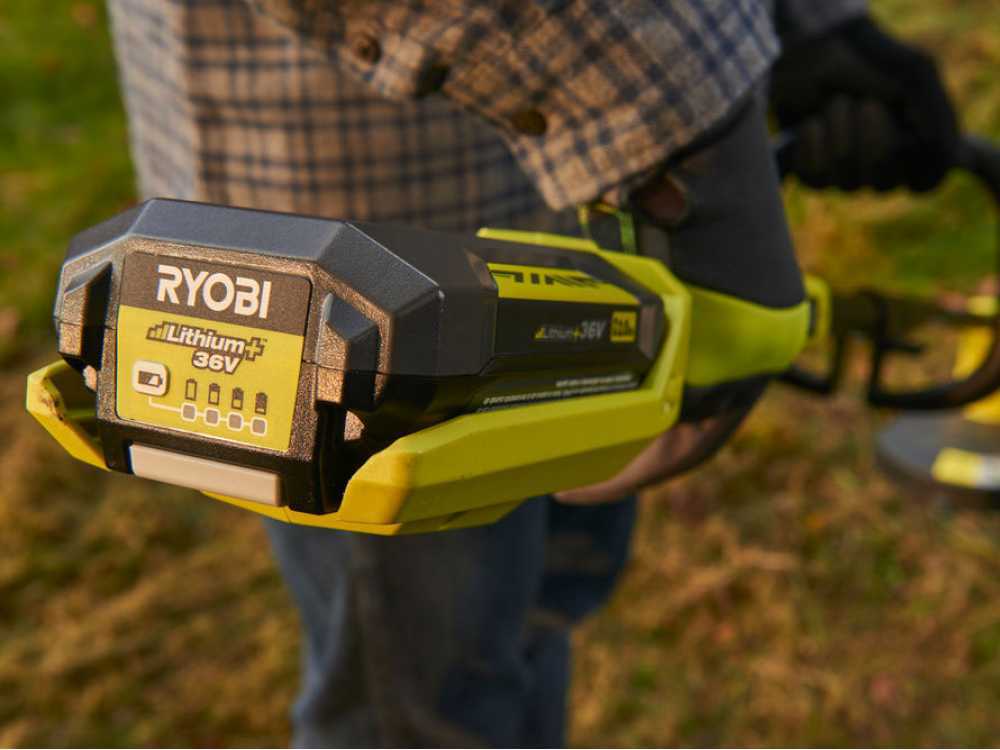

2.1 Weight
One of the aspects that most differentiates the two categories is the weight.
In fact, the internal combustion engine is one of the bulkiest and heaviest elements of the entire machine, and therefore also the element that significantly increases the total weight and difficulty of use.
This is precisely why internal combustion brush cutters can weigh over 10 kg, while battery-powered models weigh no more than 8 kg.
Although this difference in weight may seem minimal, it makes all the difference in longer work sessions, ensuring much less physical exertion.
2.2 Maintenance level
Another big difference, again related to the presence or absence of the combustion engine, is the level of maintenance required by the machine.
Battery-powered models do not require any special care, except for battery charging, especially after long periods of inactivity.
On the contrary, internal combustion engines include numerous parts that are prone to breakage, breakdowns and require constant and thorough maintenance: from the spark plug to the air filter and periodic oil checks.
If you want to know all the aspects and main characteristics of 2-stroke and 4-stroke internal combustion engines that power brush cutters read our dedicated guide.
2.3 Emissions
Lastly, emissions, meaning both pollutant and noise emissions.
Battery-powered models do not generate any pollutant emissions, as there is no petrol- or gasoline-powered engine and consequently no exhaust fumes from the engine.
The noise level is also much lower, as a battery-powered engine, even the most powerful one, is much quieter than an internal combustion one.
We shall now try to summarise the aspects and differences we have listed above in a chart.
| Weight | Maintenance level | Pollutant emissions | Noise emissions | Power | |
| Battery-Powered Brush Cutters | 3 up to 7.5 Kg | Low | Low | Low | Up to 500 W |
| Internal Combustion Brush Cutters | 4 to over 10 kg | High | High | High | Up to over 2.2 HP |
3. Power and Autonomy
Let us now look at the two fundamental aspects to consider in a battery-powered brush cutter: Power and working autonomy.
These aspects are indicated in the technical data of the machines with Voltage (V) and Amperage (A) respectively.
When talking about voltage , we mean the working power of the brush cutter; the higher the voltage of the electric motor, the greater the level of power output.
When talking about amperage , on the other hand, we mean the working range, so a higher amperage corresponds to a longer working autonomy.
A third value, again concerning the power output of the engine, Watts (W), expresses precisely the power output of the motors of electric devices, or their batteries.
This value, however, is mainly indicated on electric machines, in battery-powered models it is almost never mentioned in the technical data or in the product information manual.
3.1 How to calculate the Watts for one’s battery-powered brush cutter?
This figure can be easily obtained through a simple multiplication by knowing the machine’s Voltage and Amperage:
W = V x A
Watt = Voltage x Amperage
Let us now draw up a classification according to the different levels of Voltage, Amperage and Watts (indicated as Nominal Power).
| Volts | Amperes | Nominal Power – W | Level of Use | |
| 18 – 36 V | 2 – 5 Ah | Less than 200 W | Limited | |
| 40 – 48 V | 2 – 5 Ah | 200 – 400 W | Medium | |
| 50 – 60 V | 2.5 – 7.5 Ah | 200 – 500 W | High |
It is also possible to find brush cutters powered by 2 batteries at the same time, so how do you calculate the power (Watts) in these cases?

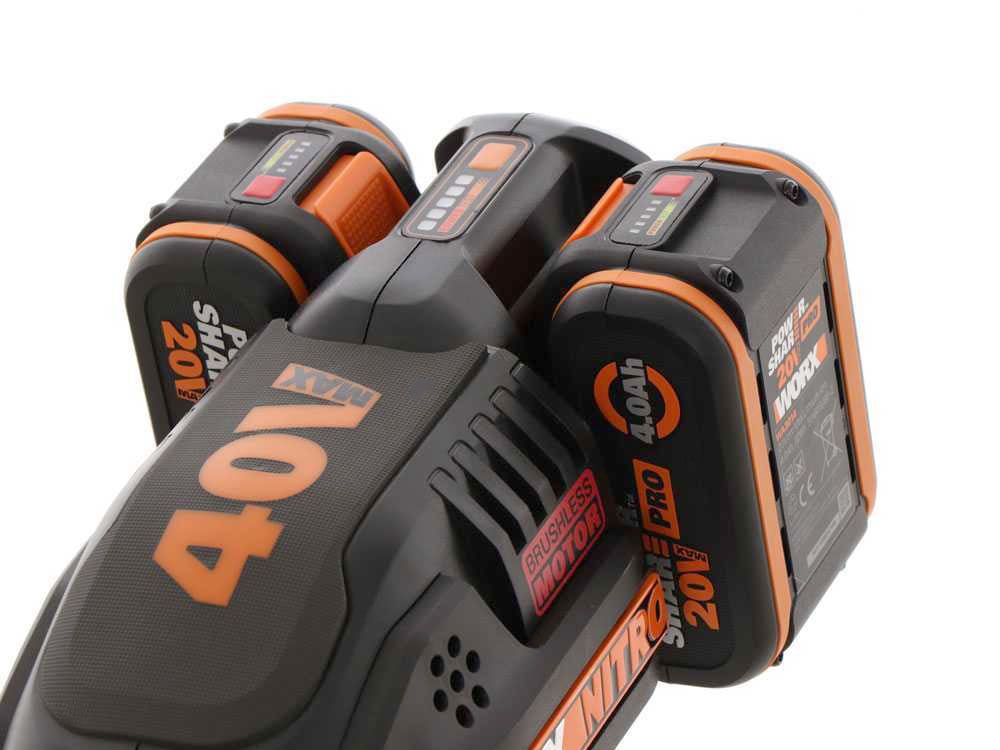
Generally, calculating the total power is very simple and often also indicated by the manufacturers themselves:
simply add up the voltage of the batteries supplied.
It is important to emphasise that only the Volts are to be added up, since the figure we wish to obtain is the power of the machine..
Taking the Worx model above as an example, it has 2 batteries of 20 Volts and 4 Amperes each, so:
- Brush cutter with 2x 20 V and 4 Ah batteries → equals 40 V and 4 Ah
4. Lithium batteries
The constant evolution and improvement of the batteries that power brush cutters is one of the main features that makes this category so popular and widespread.
The type of battery now found on all machines is the lithium battery.
Various types (lithium, lithium-ion, lithium-ion+, lithium polymer) have been created, but the most important thing to check for your brush cutter is for the battery to releases the necessary level of power and ensures adequate autonomy according to your needs.


As we said in the introduction, battery-powered machines ensure zero emissions and nearly zero noise during operation.
Now let’s look more in detail at all the advantages and features of these batteries, also in comparison with older generation batteries:
- Greater durability: Indeed, lithium batteries last up to three times longer than conventional nickel batteries;
- Full charge throughout: The battery charge remains constant throughout the charging cycle;
- Longer service life;
- No memory effect: They can be recharged at any time without negative memory effect;
- Lighter: Weighing on average 1/3 of conventional batteries.
5. The handles
A key part going hand in hand with lightness and greatly influencing the practicality of the machine is the handle.
In fact, although the weight hardly exceeds 8 kg, it is very important to have ergonomic handles and straps or harnesses, which help the operator to use the brush cutter correctly and reduce the physical strain required for operations, so that the weight is also placed as little as possible on the back and shoulders.
There are two handles on brush cutters: Single handle and Double or ‘biker’ handle.

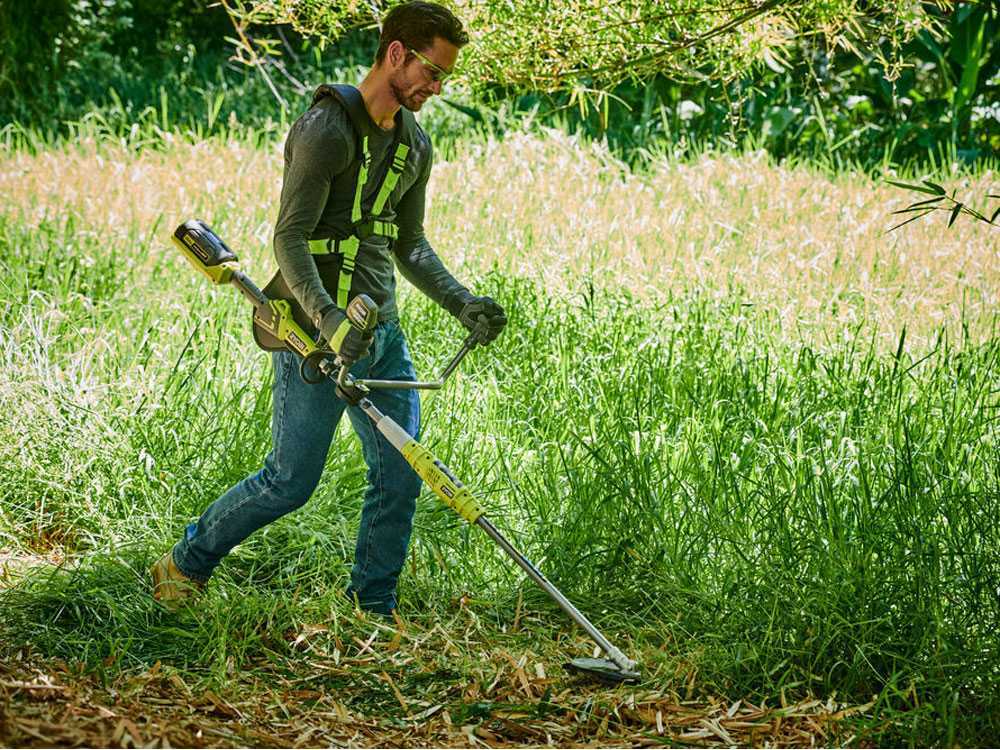
5.1 Single handle
The single handle is generally the most common, and is found on the lightest and smallest models of brush cutters, so it is particularly common on battery-powered ones.

with grip pointing to the right
It is mounted directly on the drive shaft via special bolts and can be directed with the grip either to the left or right, depending on the operator’s preference.
The grip that is performed on the machine during operation is done with one hand grasping the handle and the other hand on the handle that encloses the controls, the one at the base of the machine near the engine.
5.2 Biker handle
The double handle, on the other hand, is found on larger and more expensive models, because its design allows the operator to distribute the weight on both hands.
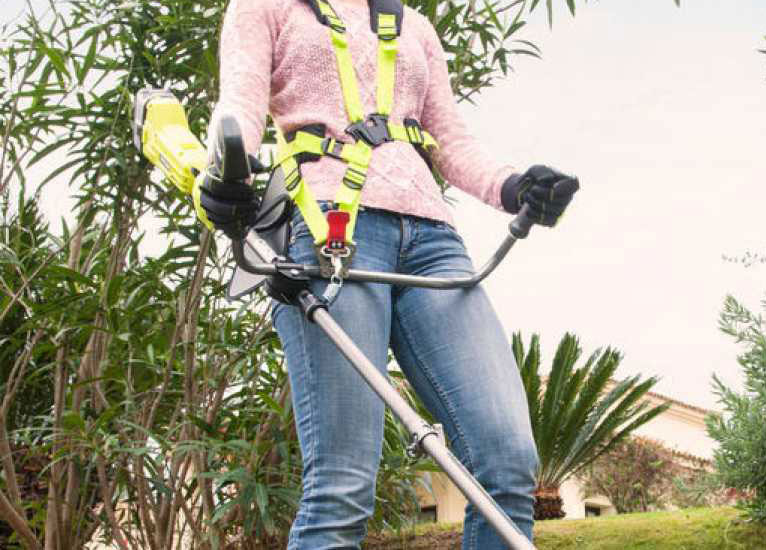
In battery-powered models it is only featured in high-end machines, and is still a much less sought-after feature compared to internal combustion products, given the lighter weight of this category.
With this type of handle, the method of using the machine also changes, as the grip is lower than with the single handle, allowing the operator to maintain a more upright and less demanding posture.
These features make it the most suitable method for prolonged mowing operations on mostly flat terrain.
- But why does this grip reduce fatigue so much?
The answer lies in the movement that the handlebar imposes on the operator.
With this handle, in fact, one performs a movement from right to left, very similar to that of a scythe, in other words, this movement combined with the possibility of better weight distribution makes the cut much less demanding.
6. Harnesses
Another help to reduce the fatigue of using the brush cutter and spread the weight more evenly: Harnesses.
There are two different types of harnesses: Simple harness and 4-5 point harness.
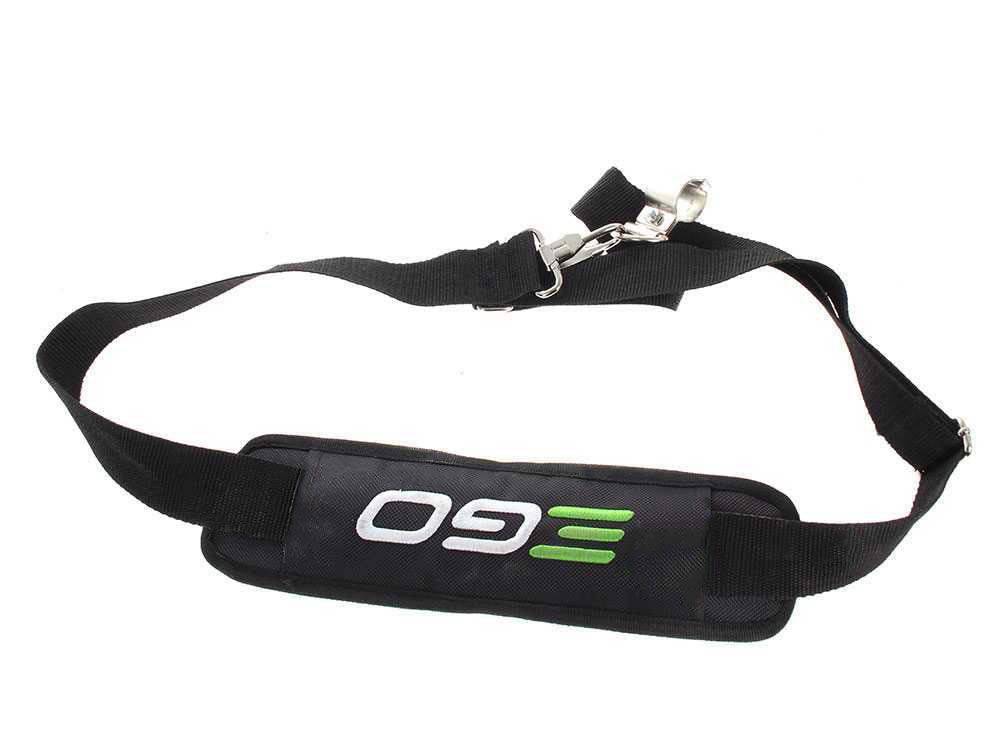


The simple harness consists of an additional support for the operator, and is found on single-handle models.
This harness is very comfortable, especially for prolonged use, as in combination with the adjustable handle, it greatly increases comfort during operations.
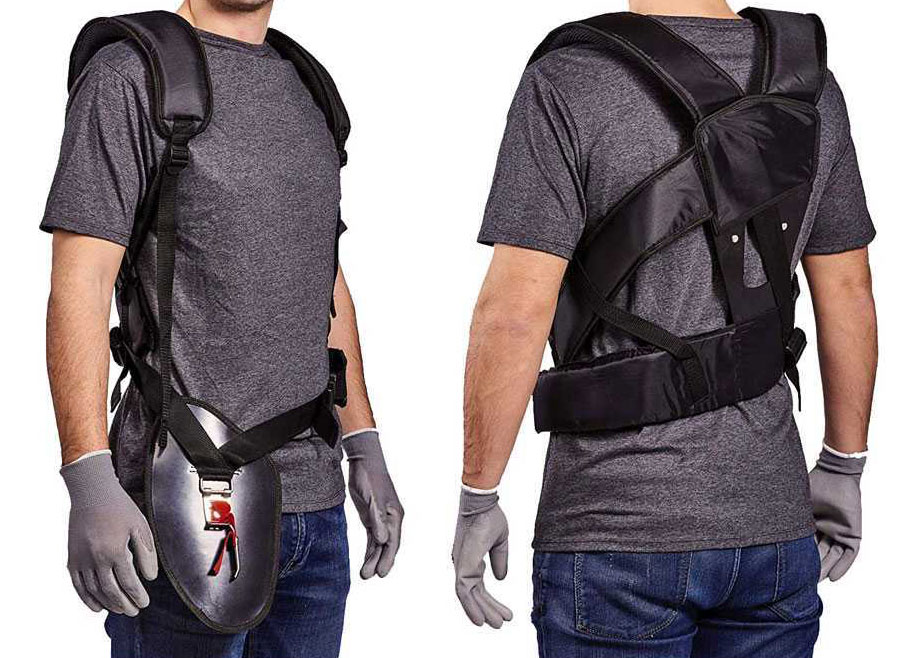
The 4-5 point harness, on the other hand, distributes the weight of the brush cutter over the shoulders and hips.
This type of harness can be found on models with double handle, as during the use of these types of brush cutters the weight rests entirely on the arms and back, and this harness helps the operator to considerably reduce physical strain.
7. Rods and transmissions
Brush cutter rods are divided into:
- Straight rod;
- Curved rod.
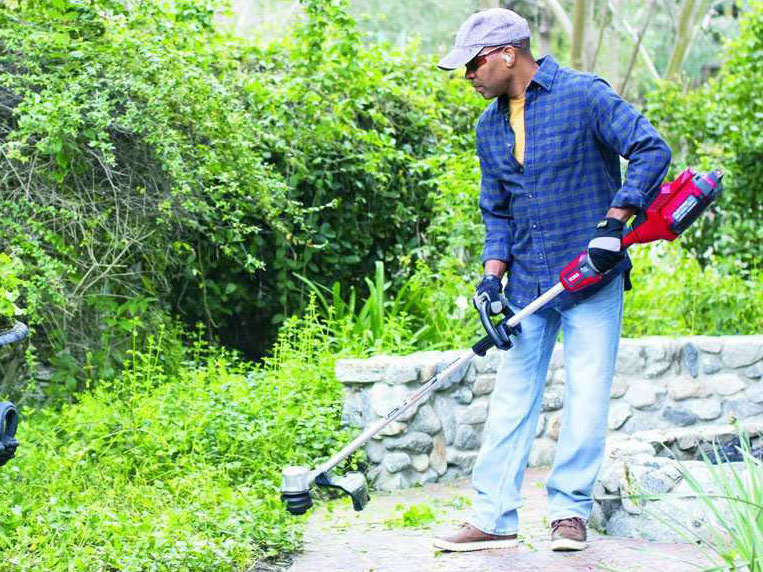

Straight or ‘rigid’ rods are the most common, and can have a variable diameter depending on the size of the machine and its power, in order to dampen vibrations during operations.
The curved rods on the other hand, are found on lower-priced models of brush cutters and especially on electric trimmers, as their shape makes it much easier to cut grass in hard-to-reach places.
Generally, the smaller rods measure 24 mm in diameter and are suitable for hobbyist work.
Medium rods measure 26 to 28 mm in diameter and are suitable for most types of work.
Lastly, we speak of professional rods when they exceed a diameter of 28 mm.
Thus we can sum up that:
– Rods with maximum 24 mm diameter → Brush cutters in the hobbyist sector;
– Rods with a diameter between 26 and 28 mm → Brush cutters in the semi-professional sector;
– Rods with a diameter from 28 mm → Brush cutters in the professional sector.
7.3 Drive Shafts
Internal drive shafts can be either rigid or flexible.
Rigid shafts are found in brush cutters with straight rods, while flexible shafts are found in models with curved rods.
This type of drive shaft always consists of a rigid rod, covered, however, by a flexible rod that connects the shaft directly to the engine.
Also very important to check, in the case of multifunctional brush cutters, is the shape of the drive shaft connection in order to be able to correctly connect the various additional accessories to the brush cutter.
Let us now look at the shapes of the various drive shafts on brush cutters:
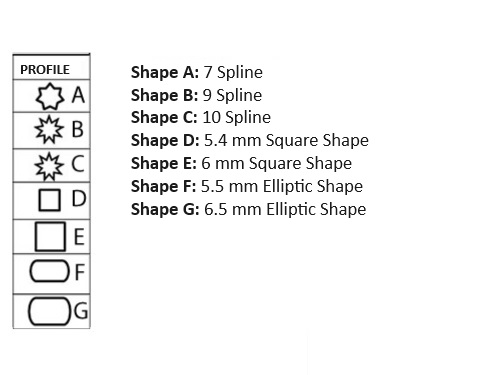
8. The bevel gear and the cutting system
The final part of the rod is called the ‘bevel gear’, and it is the part that transmits the rotary motion to the cutting apparatus.

It is located underneath the cutting unit and is one of the most important quality indicators to consider in a brush cutter.
A bevel gear with considerable dimensions means that you are dealing with a robust, high-quality machine.
To check the bevel gear, it is first necessary to remove the head, which can be done via a simple release/hook system and an Allen key; once removed, you will find the bevel gear.
As already mentioned, the cutting unit is easily removable and interchangeable as required.
The main possible cutting units are:
- Line head;
- Blade head.
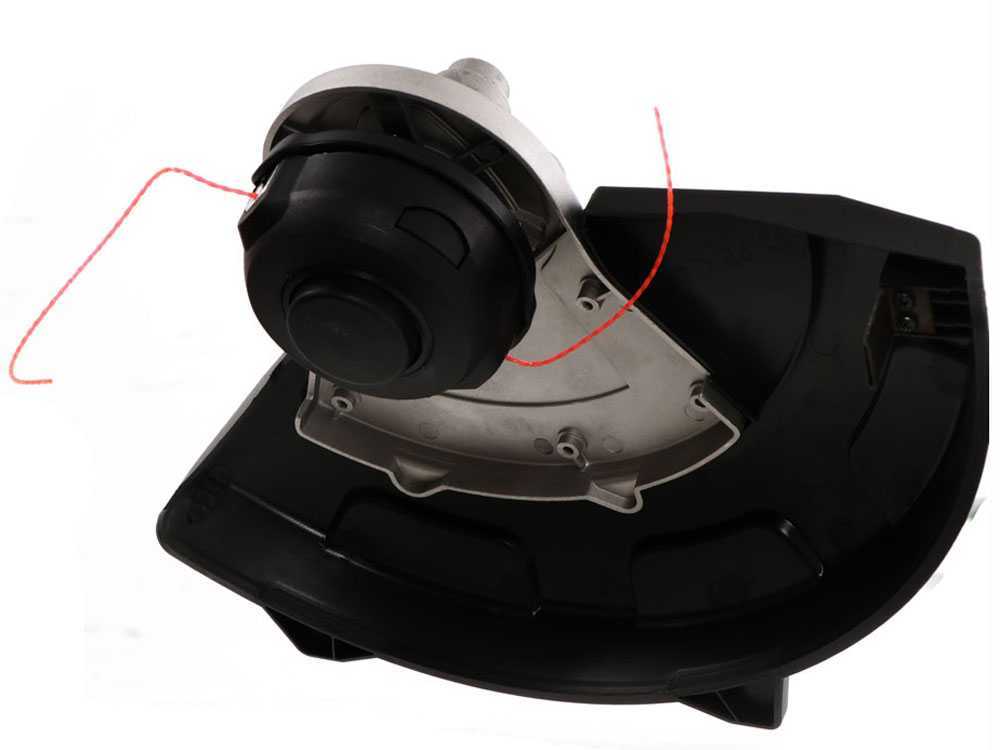
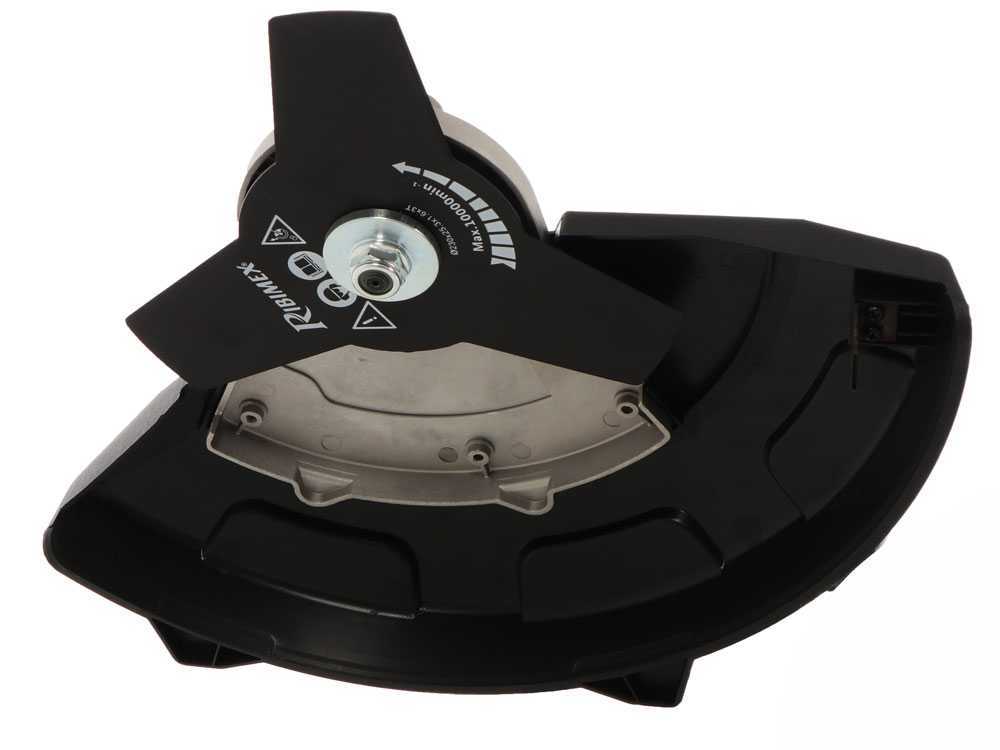
8.1 Line Head
The line cutting head is used when cutting grass that is not too tall and thick.
How does this cutting head work?
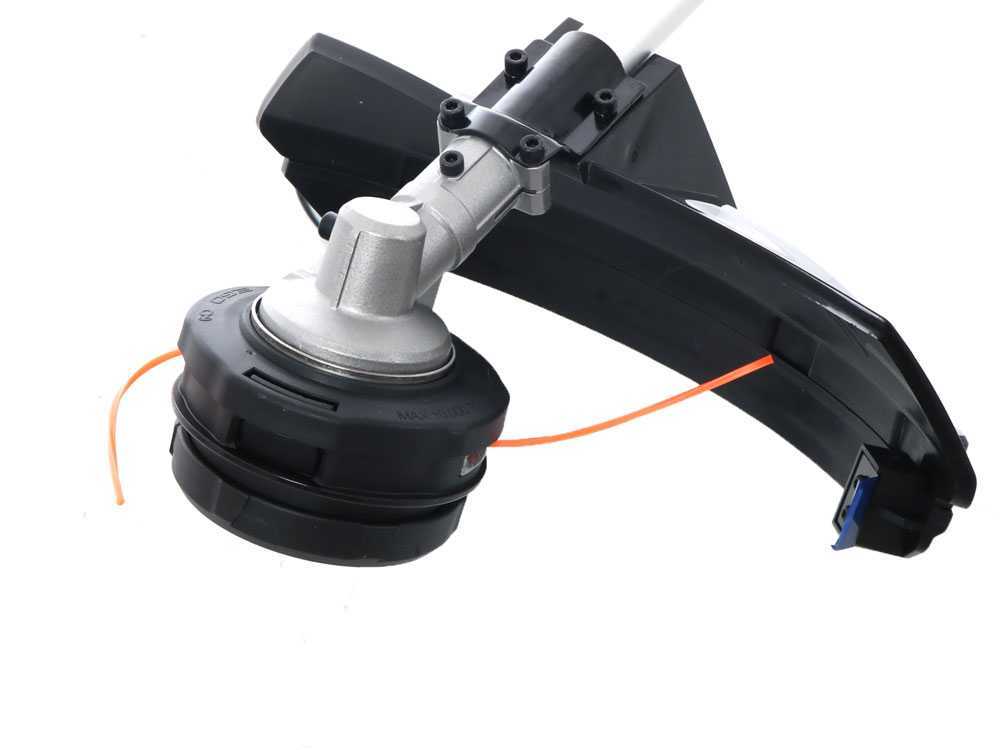
The head has a nylon line knot inside, with only the two ends sticking out. Once the brush cutter is started, the bevel gear transmits its rotary motion to the brush cutter head, which starts to rotate very fast, thus causing the two ends of the wire to stiffen up and be able to cut the grass.
It is important to note that, despite being a stiff and strong nylon thread made especially for these operations, if it accidentally comes into contact with an obstacle that is too hard, such as small branches, stones, or shrubs that are too strong, it may break.
The most common line head found in every model is the ‘ Tap & Go‘ head.
This version of the line head allows the nylon thread to be conveniently extended by simply pressing the lower part of the head to the ground..
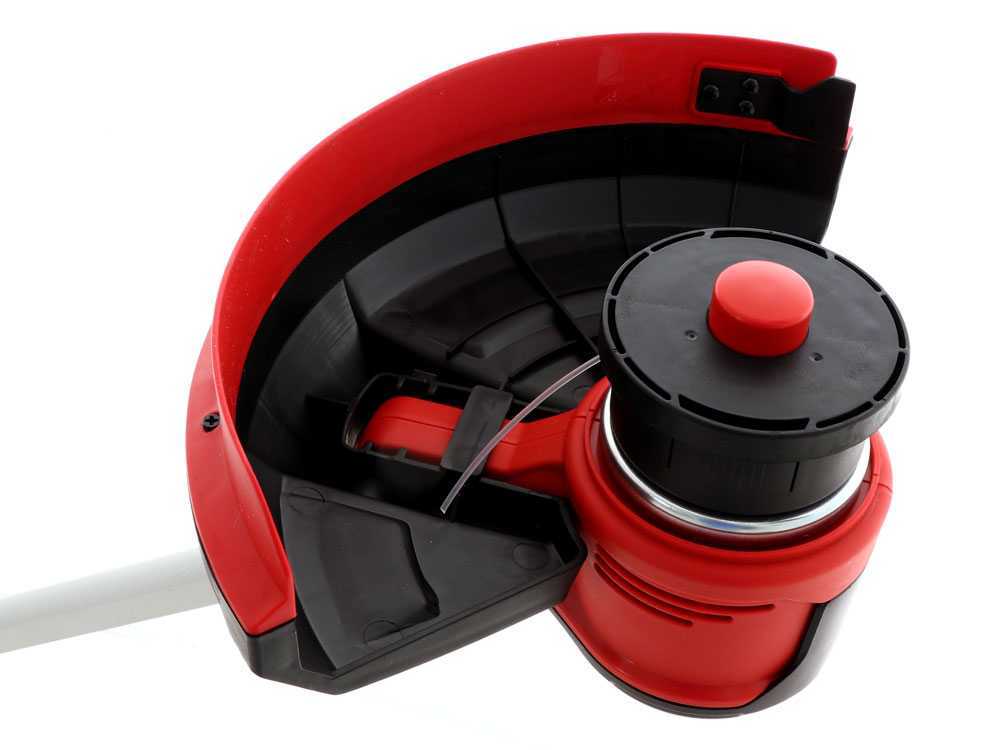

8.2 Types of lines
Various types of nylon line, each with different thickness and characteristics, can be fitted with the line head:
- Round line;
- Square line;
- Hexagonal line.
The most common and most widely used is the 2/3 mm thick line, which is versatile for most operations, while the round line is the one that jams less frequently and is less likely to break than the others with the same diameter.
8.3 Blade head
The blade head is used for all those operations where cutting with the line head is ineffective and difficult, i.e. when cutting tall, very thick grass, where brambles or small bushes can also be found.
How does this head work?
The blade head consists of a resistant hardened steel disc, which can also withstand accidental impacts.
The most common blade is the 3-tooth blade, but 2-tooth and 4-tooth blades can also be found.
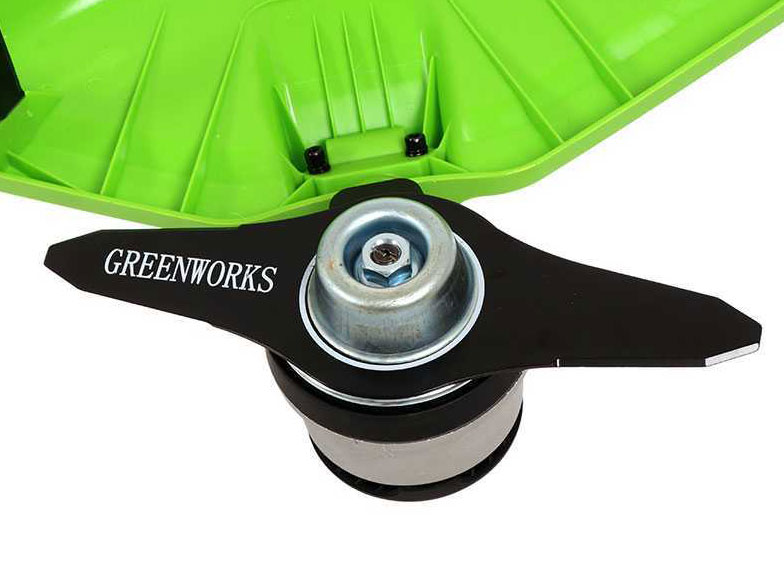
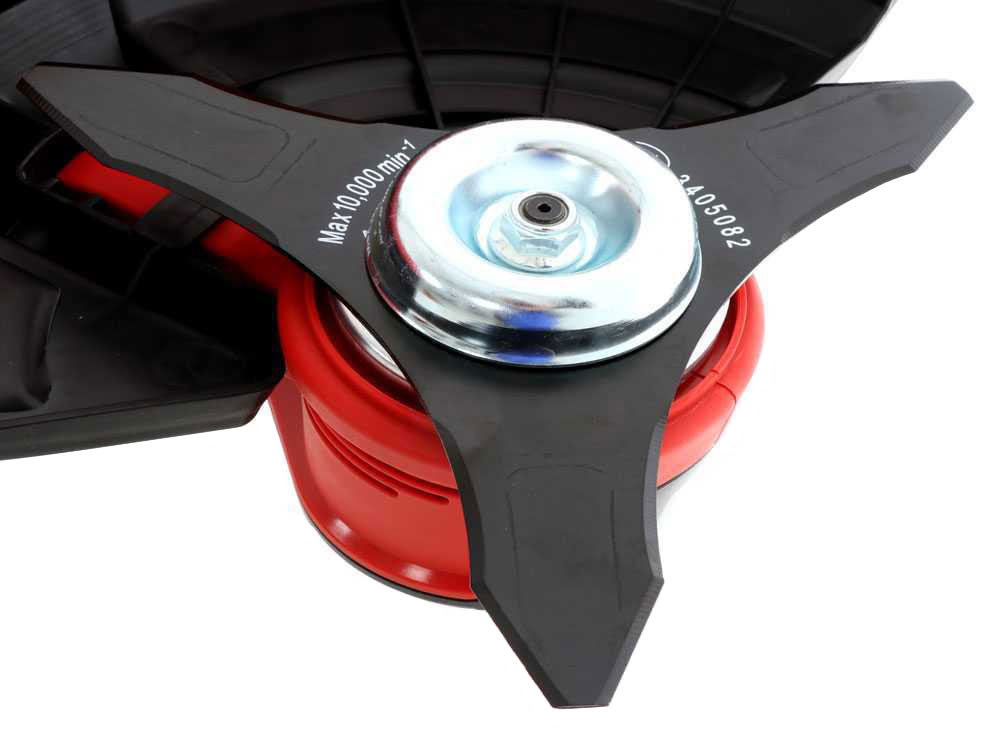
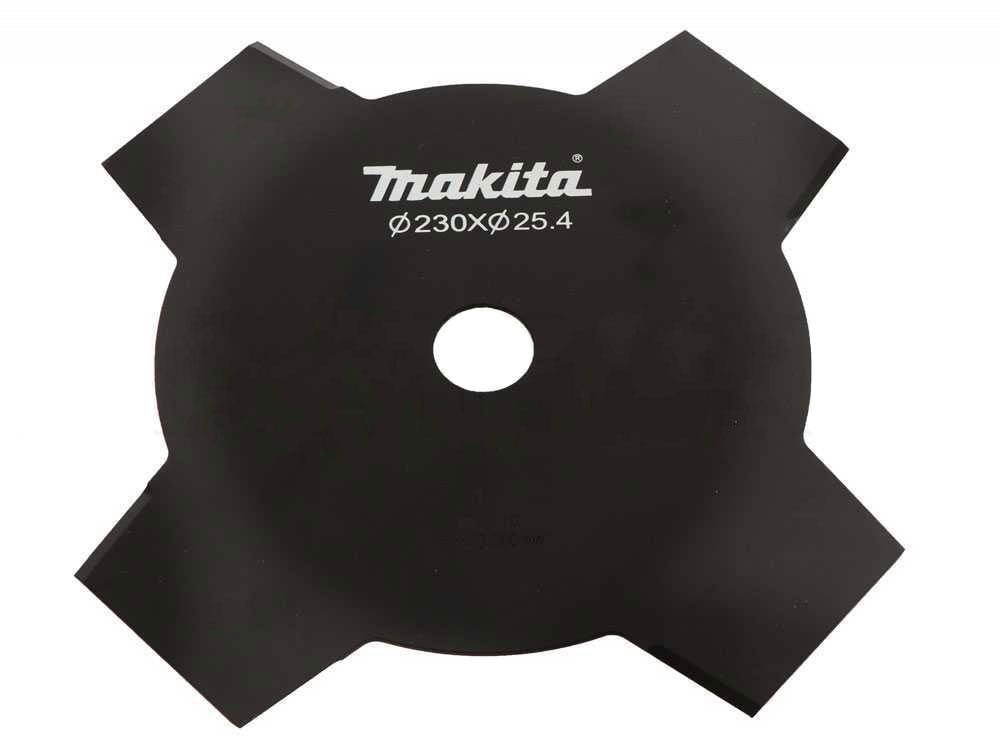
9. Multifunctional Models
Multifunctional battery-powered brush cutters have multiple uses in grounds maintenance.
They feature a two-piece detachable rod, where various additional attachments can be fitted at the end, namely:
- Pruner attachment;
- Hedge trimmer attachment.

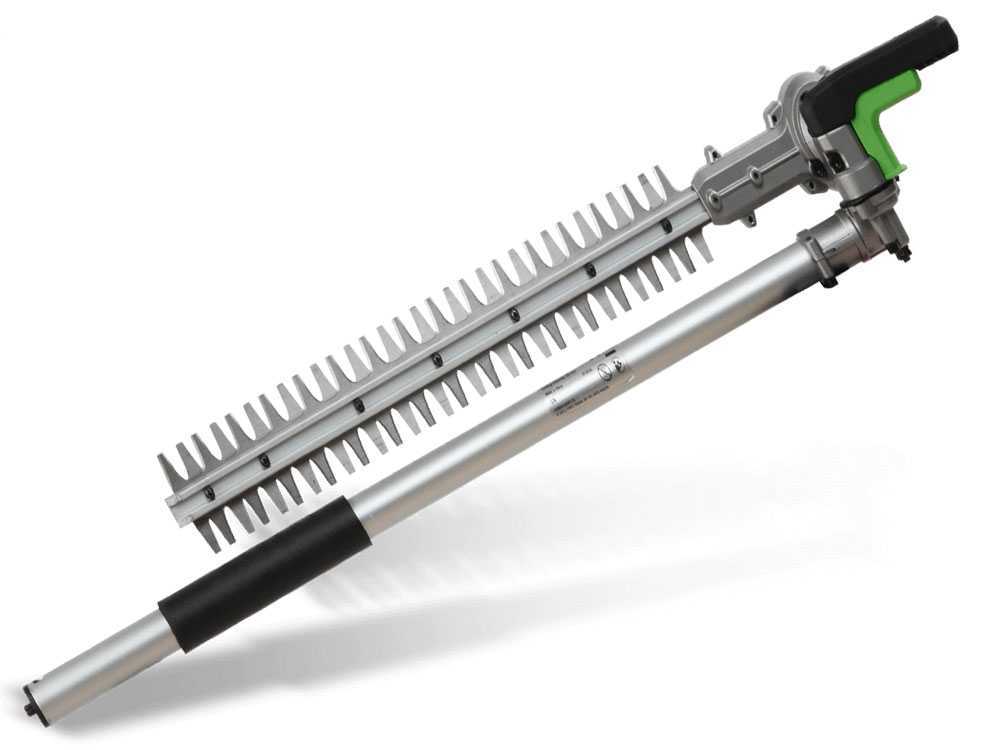
To use either attachment, simply remove the brush cutter attachment from the machine and add the required one.
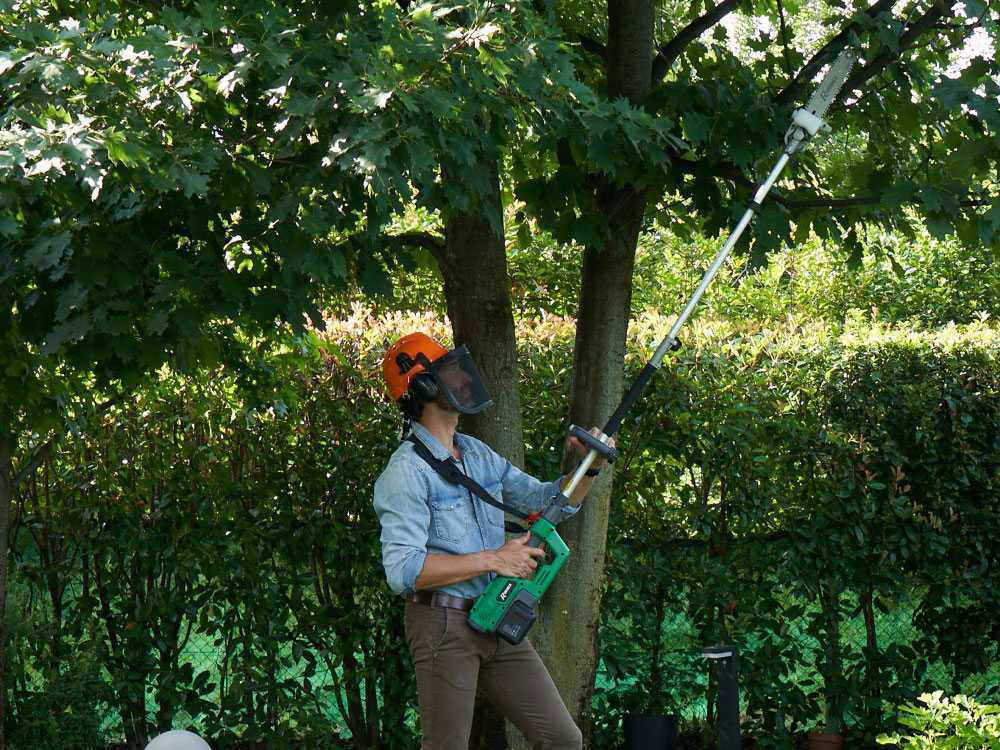
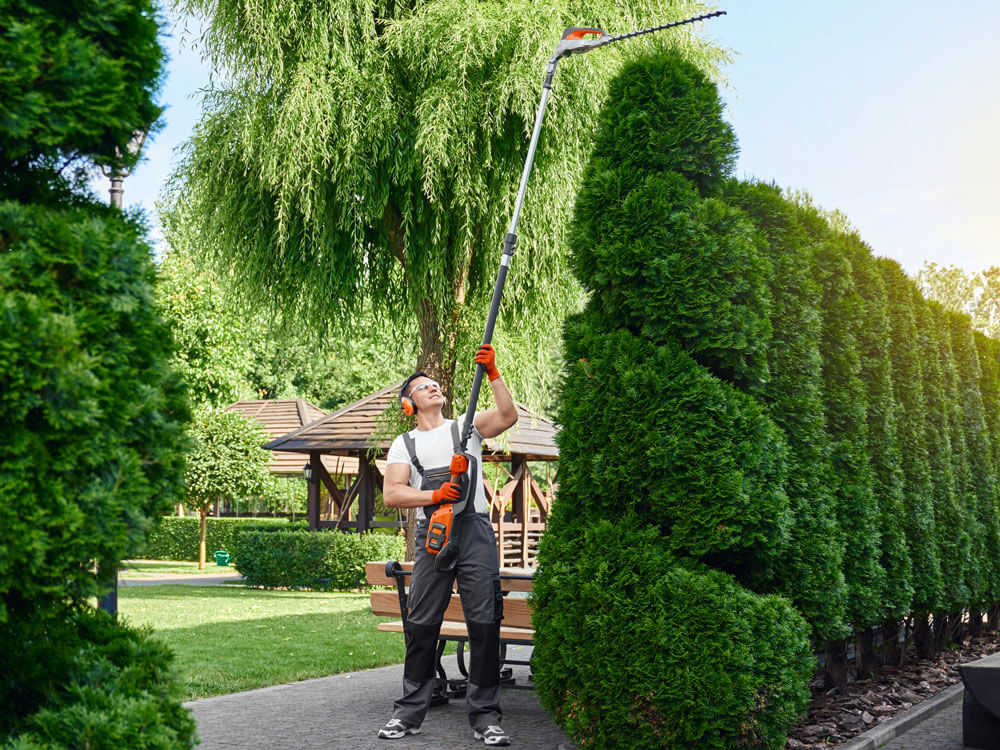
10. Safety Equipment
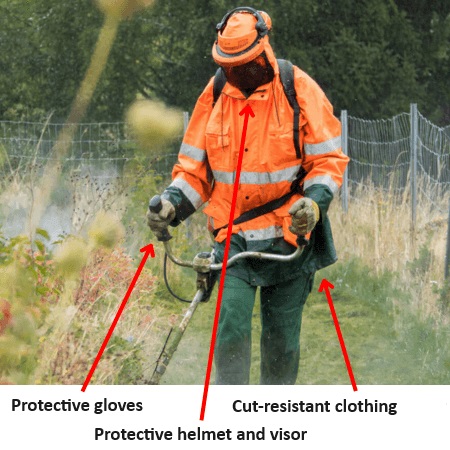
Let us now look at the main items of clothing to be worn in order to safely perform cutting operations with the brush cutter:
- Safety helmet and visor;
- Noise-reducing earmuffs
- Cut-resistant jacket and trousers;
- Protective gloves;
- Safety footwear.
In the picture above we can see typical clothing for cutting operations with a brush cutter, although in the specific case of battery-powered models there can also be small variations, such as noise-reducing ear muffs.
As mentioned at the beginning of this guide, one of the main features of cordless brush cutters is their extremely quiet operation, so headphones are not strictly necessary here, as is the case for combustion models.
Ear muffs may be the only exception, but the rest of the clothing, from the helmet with visor, to the gloves, to the cut-resistant jacket and trousers are always necessary to protect oneself from any splashes of fragments and debris, stones or small pieces of wood that may end up directly on or in the face of the operator.




